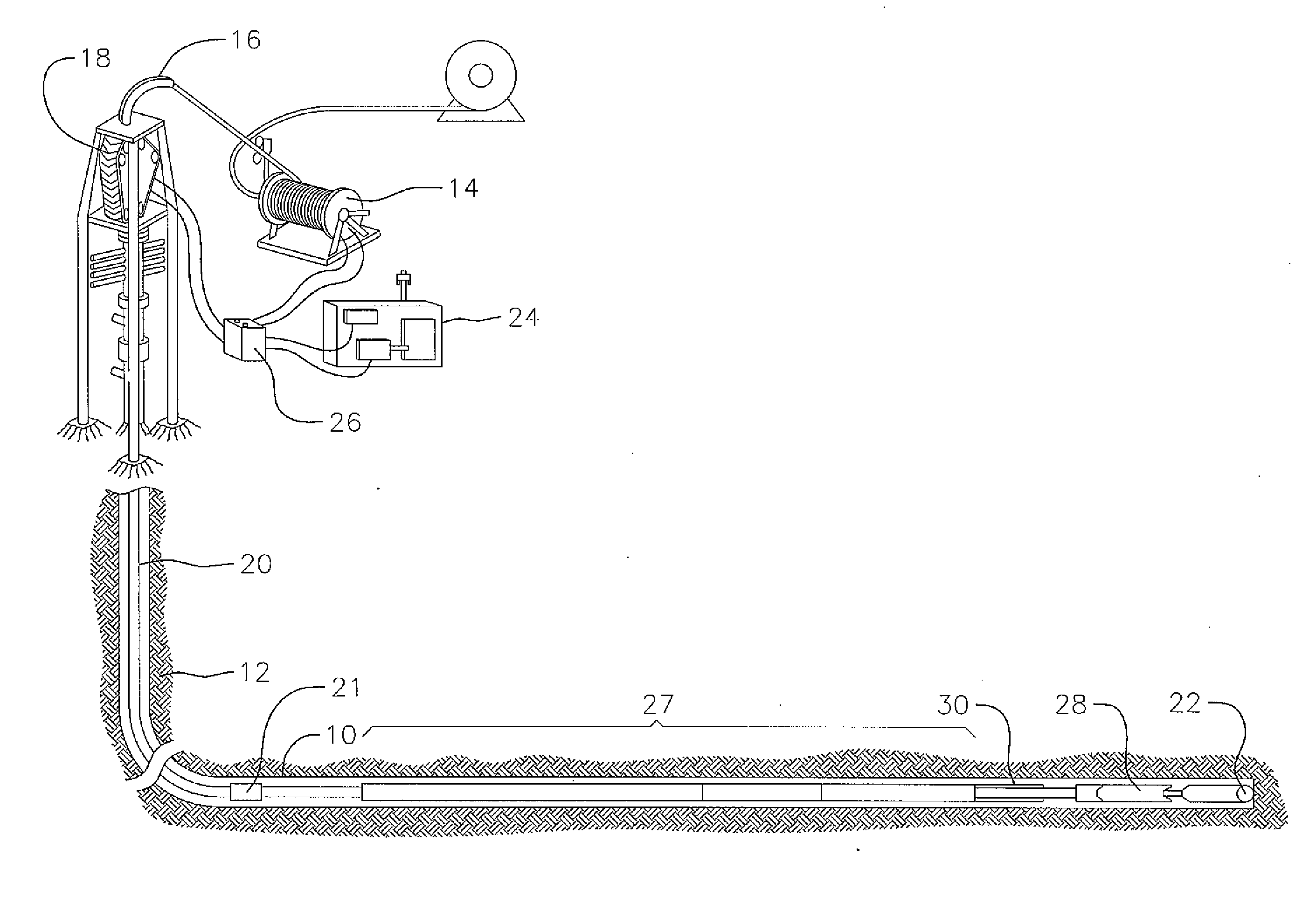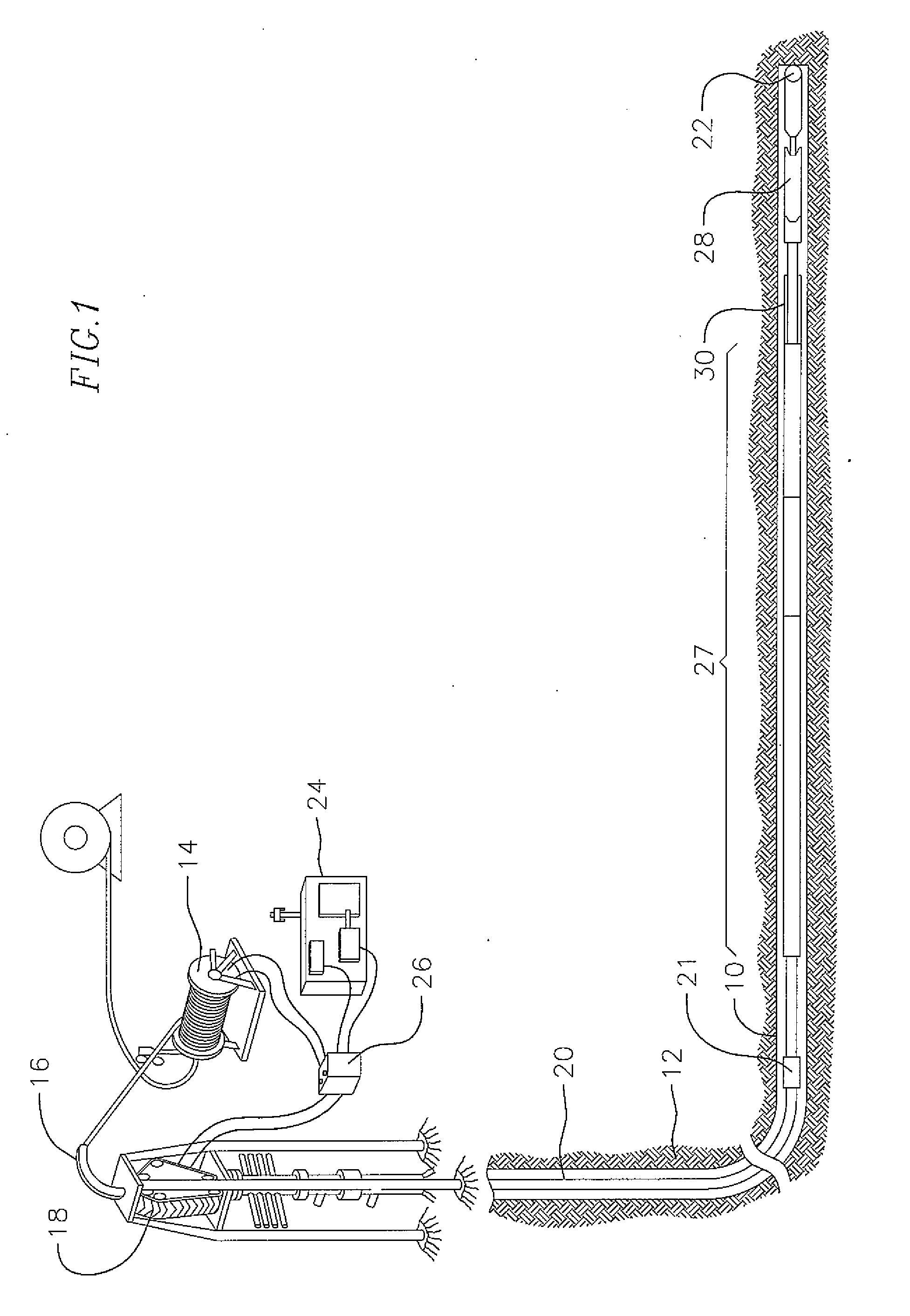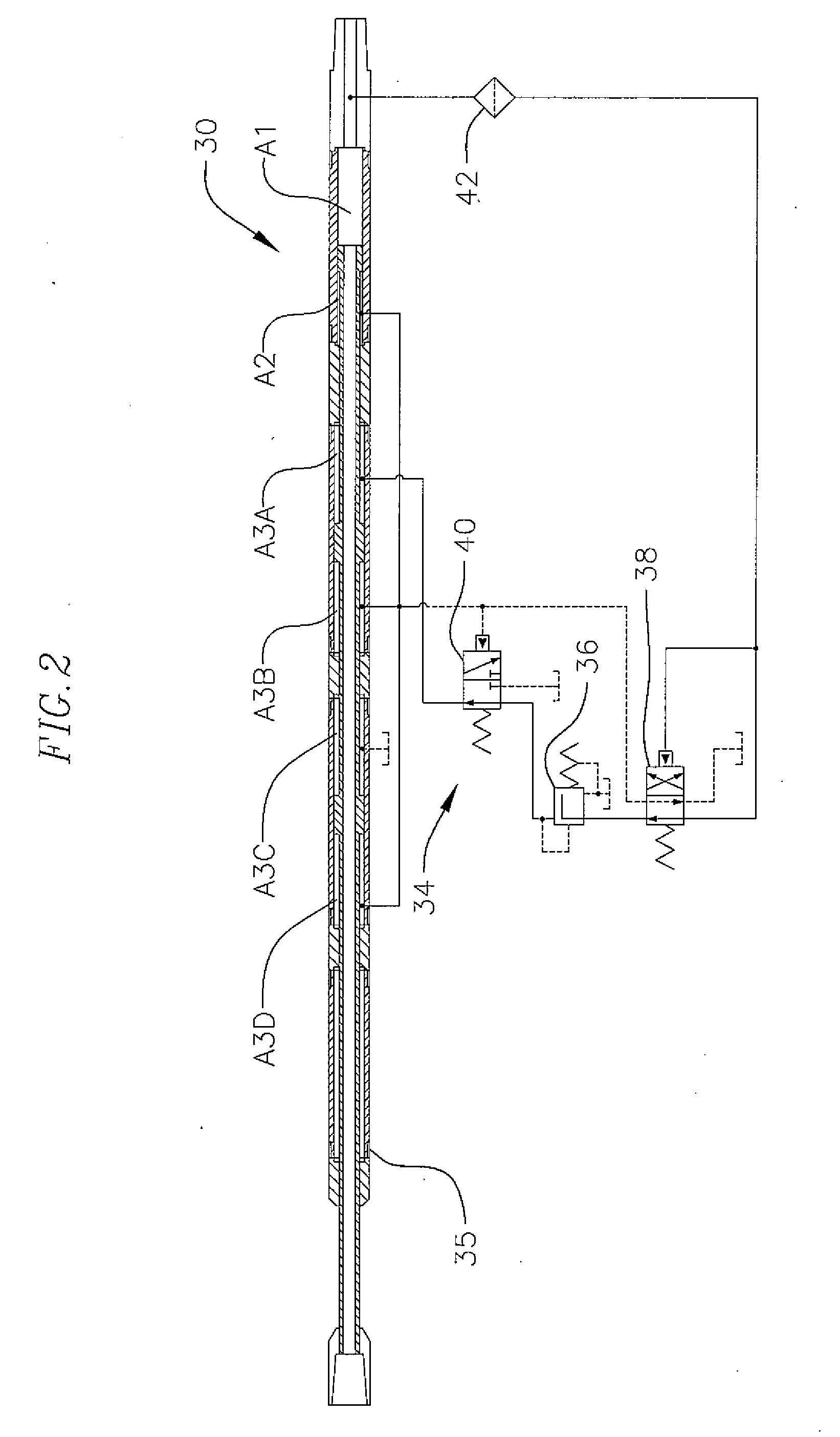Electrical controller for Anti-stall tools for downhole drilling assemblies and method of drilling optimization by downhole devices
a technology of electric controller and anti-stall tool, which is applied in the direction of drilling rods, drilling pipes, rotary drilling, etc., can solve the problems of motor stall, severe restriction of downhole fluid path, and dramatic increase in surface pump pressure, so as to eliminate the effects of bending, differential pressure and weight-on-bit, and enhance future drilling operations
- Summary
- Abstract
- Description
- Claims
- Application Information
AI Technical Summary
Benefits of technology
Problems solved by technology
Method used
Image
Examples
example
[0094]Specifications for One Embodiment AST illustrated in FIGS. 6-8:
DescriptionCharacteristicTool OD3.00inTool ID.75inLength - Expanded8.1ftLength - Collapsed7.4ftStroke9inMax Temp300°F.Tensile Strength50,000lbsMax Motor Torque2,000ft-lbsMax Dog Leg25° / 100ftTool Joint2⅜PAC
[0095]The design of an electrically controlled AST is flexible in that the pressure settings may be changed to fine tune the AST. Programmable pressure settings may be changed on surface or while in operation. Current available communication techniques include mud pulse telemetry, fiber optic and wireline.
[0096]If a large increase in WOB is needed, then the shaft of the AST can be replaced to allow the installation of additional pistons.
Total DownholePressure ControlMax WOB from# of PistonArea (sq. in)Valve Setting (psi)AST (lbs)14.86503,05527.96505,135311.06507,150
[0097]Features and Benefits:
[0098]The following illustrates features of an electrically controlled AST:[0099]Active WOB: The tool will attempt reset in...
PUM
 Login to View More
Login to View More Abstract
Description
Claims
Application Information
 Login to View More
Login to View More - R&D
- Intellectual Property
- Life Sciences
- Materials
- Tech Scout
- Unparalleled Data Quality
- Higher Quality Content
- 60% Fewer Hallucinations
Browse by: Latest US Patents, China's latest patents, Technical Efficacy Thesaurus, Application Domain, Technology Topic, Popular Technical Reports.
© 2025 PatSnap. All rights reserved.Legal|Privacy policy|Modern Slavery Act Transparency Statement|Sitemap|About US| Contact US: help@patsnap.com



